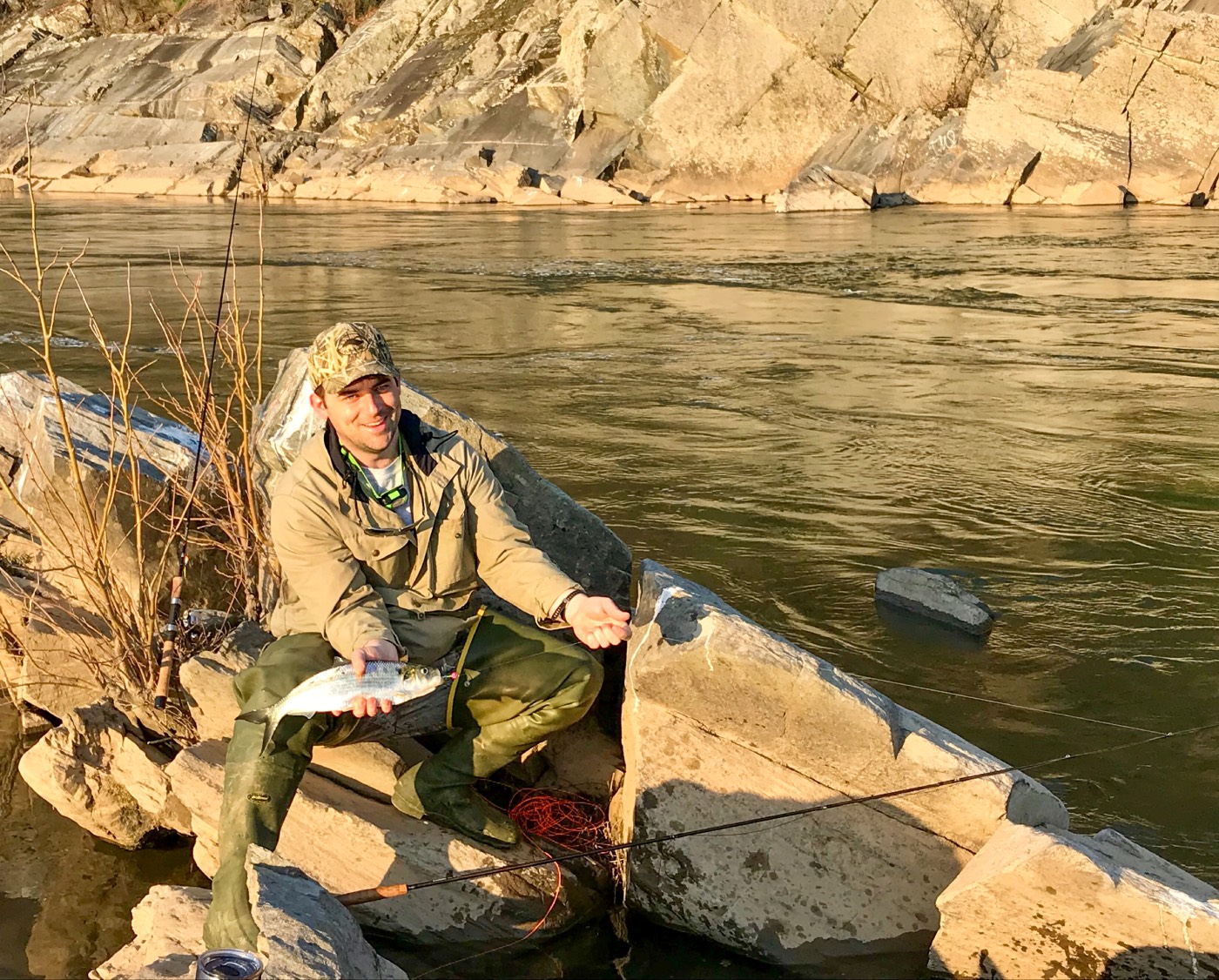Written by Shawn Swearingen
Scrambling up and down the slopes to mountain streams in my youth came in handy as my friend led me to the quiet roar of the Potomac River. The tide and water temperatures were right for an eventful evening. We escaped our office in downtown D.C. a few minutes early and rode the metro train to his house with my fly rod tube in hand garnering bewildered looks from fellow passengers. A short drive after Nick retrieved his light tackle and changed into his worn sneakers we were scrambling over rocks to catch the shad run. Their annual return is as much of a springtime ritual as the more famous cherry blossom trees and flowering dogwoods.
Freshwater River Shad
Shad, in the herring family, are anadromous fish like salmon and striped bass; living in the ocean until it is time to procreate, at which they return to the freshwater rivers where they were born to spawn. Native to the North American Atlantic coast they were introduced to the North American Pacific coast during the 1800s. While shad populations have exploded after they were introduced to the west coast in rivers such as the Columbia and Sacramento, their returns to spawn in native waters along the east coast from Florida to New England have dwindled into being ‘threatened’ populations. With some minimal exceptions [know your fishing regulations], fishing for shad is a catch-and-release affair.
There are two common types of shad that you are going to encounter when they return to freshwater rivers each Spring; Hickory and American. While they are a type of herring, each has their own physiological and behavioral characteristics. All will hit a shad fly or lure when presented but not out of need to eat. Author John McPhee offers a detailed account of the remarkable history and fishing for the underrated target in “The Founding Fish”.

Where to Target Freshwater Shad
Unless you know someone willing to mentor you, I’d recommend picking the brains at the local tackle shop or going with a fishing guide. Everyone has ‘their’ honey holes on certain tides and times of the run; the first word of warning is to not ‘hotspot’ or share where someone takes you on social media. The right guide will be able share knowledge of the river and that particular shad population. They will also be able to safely put you in place of the best odds from either the shore or in a boat. Groups like the Potomac Valley Fly Fishers, Tidal Potomac Fly Rodders or the National Capital Chapter of Trout Unlimited are good organizations and people to connect with as well.
While shad are not large fish, weighing between three and eight pounds, they are a fun and aerobatic fighter. Lightweight conventional tackle will be able to handle shad and safely release them. If you decide to target shad with a fly rod, a single hand 6-weight rod would be about as light as you would want to use. Using a sinking tip fly line will be able to help you effectively put the fly in the needed area of the water column. It will also help you cast the fly of choice with minimal casts.
Bonus Catch
On rivers such as the Potomac you are likely to run into other fish species that will gladly strike a fly. At times I’ve felt ‘under gunned’ on a 6-weight fly rod when a 30” striped bass decides to hit the fly, or when a blue catfish also decides it is hungry. Those times I was fortunate enough to bring them to hand, but there have also been times the fish hit the main current and took me to my backing before breaking off. These hungry predators follow the shad run up the river systems as part of the food chain or, like the striped bass, are making their own spawning runs.
Other species I have witnessed take a shad dart or fly range from crappie, perch, largemouth bass and even invasive snakeheads.
Part of the fun of shad fishing is the warming sun on your back during a chilly morning, anticipating the start of the run and trying to time the right tide; being surprised with a few early hickory shad and then tussling with a striped bass in a river eddy showing off its blue and purple hues against the silver scales.
There have been other occasions I’ve missed the right timing and didn’t catch anything else. Then sometimes I have been able to escape work a few minutes early, and be pleasantly surprised to have the river bank to myself with a friend. That particular evening we fished until the lights of the nearby bridge were what guided us back to the car. Nick fishing with light tackle and me with the fly rod accounted for over a 100 fish coming to hand and being released between us in the short few evening hours.
It is never about the numbers, but that evening it certainly was for the pure enjoyment and spectacle of leaping shad in the eddies of George Washington’s river.




























